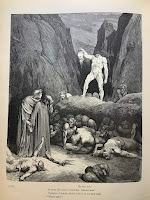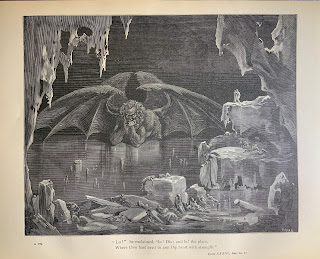 Sometimes we just want to look at something beautiful. Sometimes a thing that is beautiful is also grotesque. This week we're looking at the art of Gustave Doré and his interpretations of some of the most disturbing imagery of medieval literature: Dante's Inferno.
Sometimes we just want to look at something beautiful. Sometimes a thing that is beautiful is also grotesque. This week we're looking at the art of Gustave Doré and his interpretations of some of the most disturbing imagery of medieval literature: Dante's Inferno. Doré (1832-1883) was a prolific French artist who provided lavish illustrations for over 50 books during his lifetime, not to mention his work in other mediums. His engravings tended to adorn works of classic literature, and if you've seen Dante illustrated before, there's a good chance that it was Doré you were looking at. His style, finely detailed, dark, and dramatic, is a perfect fit for the Italian poet's vision of Hell.
Written in the early 14th century, The Divine Comedy (of which Inferno is only the first part) follows the author's pilgrimage to the underworld, making his way through each circle of Hell before he is able to move on to Purgatory and then to Heaven. Guided in this first stage of his journey by the poet Virgil, Dante sees and describes layer after layer of sinners in torment. Doré's depictions of each circle are appropriately disturbing and atmospheric. We could say more here, but we really just recommend taking a look for yourself.
To see Doré's version of Dante's Inferno, ask for IllusD73dan.
No comments:
Post a Comment